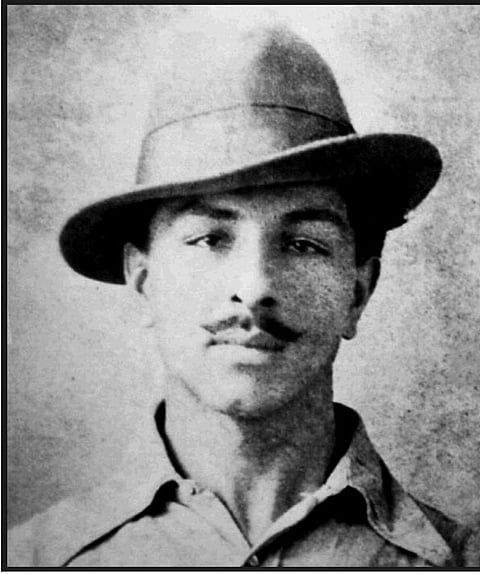
- Home
- NG Hindi
- India
- World
- Politics
- Sex & Relationships
- Entertainment
- Culture
- Lifestyle
- Economy
- Sports
- Sp. Coverage
- Misc.
- NewsGram Exclusive
- Jobs / Internships

Bhagat Singh stands out to be one of India's greatest revolutionary freedom fighter who was given the death penalty by the British colonizers. Although he died at a very young age of 23 but his actions inspired the youth of the nation to fight for the nation's freedom.
Bhagat Singh belonged to Punjab and popularly referred as legendary revolutionary Shaheed-e-Azam Bhagat Singh. He was born on 28 September 1907 in the village of Banga, Lyallpur district (now in Pakistan). Bhagat Singh is considered to be one of the most influential revolutionaries of the Indian independence movement. He inculcated the spirit of martyrdom since his childhood.
Due to the utter influence of Bhagat Singh, Britishers hanged him an hour ahead of the official time. Wikimedia Commons
At a very early age, he got inclined towards socialism and socialist revolutions led by Lenin and soon he started to follow and read about them. The leaflet that he threw in the Central Assembly on 9 April 1929, he stated, "It is easy to kill individuals but you cannot kill the ideas. Great empires crumbled while the ideas survived."
Also Read: 8 must-read works of Rabindranath Tagore
Take a look at the life of one of the most celebrated Indian freedom fighters.
'Inquilab Zindabad' was the very famous phrase of Bhagat Singh. Wikimedia Commons
Also Read: 10 Facts You Need To Know About Homi Bhabha
Bhagat Singh is considered to be a legend. Many of his actions are well-known. His execution ignited the feeling of unity in many people to take up the revolutionary path, playing an important role in India's freedom struggle. On the other hand, many didn't agree with his radical approach to attain freedom. Even after his death, his inspiring actions continued to stir the desire for freedom.
Once Bhagat Singh said, "They may kill me, but they cannot kill my ideas. They can crush my body, but they will not be able to crush my spirit.
